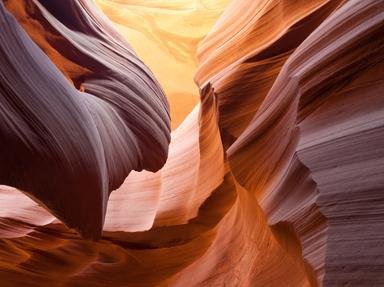Quiz Answer Key and Fun Facts
1. The name given to a region in which limestone formations dominate the scenery and topography is karst. In what country is the region that gives us this name?
2. A prominent form of limestone weathering is the dissolution of limestone by acids. What is the acid primarily responsible for this?
3. Limestone is primarily comprised of which compound?
4. This term refers to a closed depression in a limestone area formed by dissolution of the limestone or collapse of a bedrock roof of a cave.
5. Springs are common features of limestone areas. Resurgences and exsurgences are different than springs.
6. Stalactites and stalagmites, prominent cave formations, are examples of what?
7. Limestone pavements are large areas of flat, exposed limestone. They are made up of large slabs of limestone rock. What are these slabs of limestone called?
8. These are steep karst towers of limestone, surrounded by flat alluvial plains.
9. A sedimentary rock containing calcium carbonate and clay. It is crumbly, unconsolidated and is often used as a fertilizer for lime deficient soils.
10. What is a bourne?
Source: Author
onlytrivial
This quiz was reviewed by FunTrivia editor
crisw before going online.
Any errors found in FunTrivia content are routinely corrected through our feedback system.

